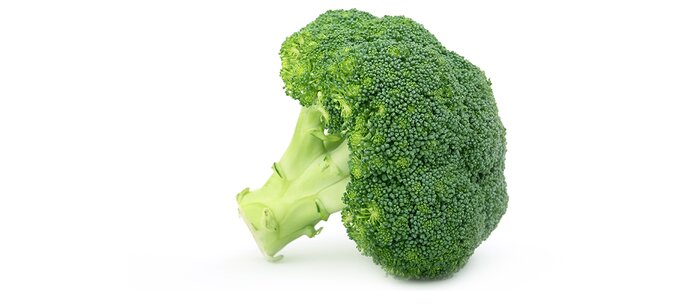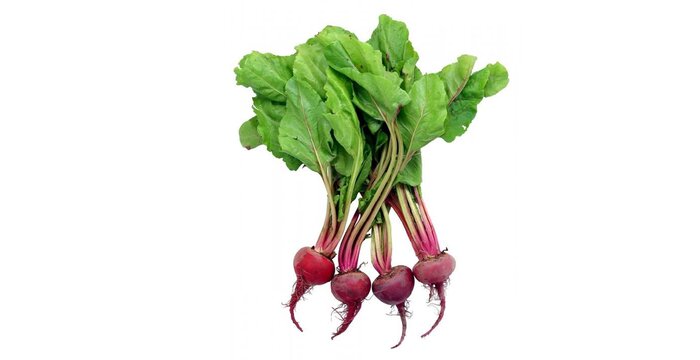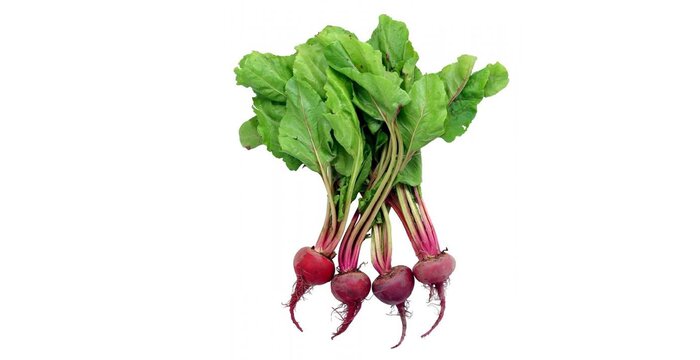Maximizing Nutrient Intake: Utilizing All Parts of Vegetables for Health and Performance
Picture this: you’re meticulously preparing your favorite vegetable dish, discarding the stalks, tops, or stems, oblivious of the essential nutrients you’ve just thrown away. This article, “Maximizing Nutrient Intake: Utilizing All Parts of Vegetables for Health and Performance,” enlightens you on the priceless value of these often-overlooked vegetable parts. From the vitamin-rich broccoli stalks perfect in stir-fries, eggs, and pasta, the antioxidant-filled Swiss chard stems suitable for your soups, salads, and stews, the nutrient-dense beet greens perfecting your salads and pastas, to the magnesium-carrying watermelon seeds that enhance your salads, yoghurts, and oatmeal, discover an exciting world of maximizing nutrient intake that exists beyond the common vegetable portions. Even the unexplored carrot tops can surprise you with their potential nutritional benefits, and their suitability in soups, salads, and more!

This image is property of www.bodybuilding.com.
Understanding the Importance of Micronutrients
Defining micronutrients
You might be familiar with macronutrients — the carbohydrates, fats and proteins that provide your body with energy. But there’s a whole other group of nutrients your body needs in smaller quantities, known as micronutrients. These encompass various vitamins, minerals, and antioxidants which include vitamin C, vitamin A, folate, potassium, magnesium, manganese, to name a few. These micronutrients are essential to the body, even though they have to be consumed in small amounts.
The role of micronutrients in health and performance
Micronutrients play vital roles in many processes in your body. They contribute to cardiovascular health, immune function, bone health, and neural functions among others. Without optimal levels of micronutrients, your health and performance can suffer. They not only help your body function properly on a daily basis, but these important nutrients also contribute to long-term health by reducing the risk of chronic illnesses, such as cardiovascular diseases, diabetes, osteoporosis, and cancer.
Micronutrient deficiency: symptoms and risks
While most people get enough macronutrients from their diet, it is not uncommon to have a deficiency in one or more micronutrients. This can lead to a variety of health problems, ranging from minor issues such as fatigue, poor concentration, and recurring infections to major health problems like anemia, bone loss, and impaired vision. Over time, ongoing deficiencies can have serious consequences, contributing to chronic diseases and health conditions.
Boosting micronutrient intake with vegetables
One of the best ways to ensure a good intake of different micronutrients is by incorporating a variety of vegetables in your diet. However, the question is — are you making the most of your vegetables? Often, we tend to discard certain parts of vegetables that are packed with these important micronutrients. Let’s delve deeper into this subject.
Exploring Nutrient-Dense Parts of Vegetables Often Discarded
Identifying nutrient-rich vegetable parts often discarded
Many parts of vegetables that often end up in the trash seem to contain a wealth of nutrients. These include broccoli stalks, beet greens, carrot tops, watermelon seeds, Swiss chard stems and many others. These parts are typically discarded due to habit, preference, or simply a lack of awareness of their nutritional value.
Assessing the nutritional cost of discarding these vegetable parts
When we discard these parts of vegetables, we also throw away precious micronutrients that could contribute to our overall health and well-being. This can never be a cost-effective choice. For instance, broccoli stalks are rich in vitamin C, folate, potassium, and manganese. Beet greens, another underused part, boasts of a nutrient profile comprising vitamin C, vitamins A and K.
Discussing common misconceptions and myths about certain vegetable parts
There are many misconceptions that drive people to discard these beneficial parts. Some people believe that certain parts are inedible or lack flavor. But in reality, with the right preparation and cooking techniques, these often-discarded parts can not only provide a boost of nutrients but can also be a delightful addition to your culinary repertoire.

This image is property of www.bodybuilding.com.
Gain Access To Complete Article About Maximizing Nutrient Intake
Redesigning Preparation Techniques to Retain Nutrients
Brief on traditional preparation methods and their impact on nutrient content
Traditional preparation methods often overlook the use of certain parts of vegetables or handle them in ways that lead to a significant loss of their nutritional value. For example, over-peeling or overcooking can strip vegetables of their nutrients.
Guide to proper washing, peeling, cutting techniques for nutrient preservation
Adapting the correct washing, peeling, and cutting techniques can go a long way in retaining the nutritional content of your vegetables. For instance, vegetables should be washed before cutting to prevent the nutrients from being washed away. Peeling should be minimized as many nutrients are present in the outer layers.
Cooking methods that maximize nutrient retention
The cooking method you choose also impacts how many nutrients you get from your vegetables. Overcooking can deplete vegetables of their nutrients. Methods that use minimal water and short cooking times, like steaming, sautéing or roasting, can help keep those nutrients locked in.
Using Broccoli Stalks for Maximum Nutrients
Highlighting the nutritional benefits of broccoli stalks
Broccoli stalks often end up in the trash, but they can be a treasure trove of nutrients. They pack high amounts of Vitamin C, folate, potassium, and manganese, which are all important for your health.
Recipe ideas incorporating broccoli stalks
Don’t know what to do with that broccoli stalk? Try adding it into your stir-fries, toss it in with scrambled eggs, or blend it with your pasta dishes. Remember to peel the tough outer layer before using.
Tips for storing and preparing broccoli stalks
Store the entire broccoli, including the stalk, in your refrigerator’s crisper drawer. When you’re ready to use them, simply cut off the bottom of the stalk, peel the tough outer layer, and you are good to go!

This image is property of image.isu.pub.
Incorporating Beet Greens into Your Diet
Overview of nutritional benefits of beet greens
Beet greens, often discarded, are nutrient-rich and deserve a place on your plate. They have high levels of vitamins C, A and K, along with many other beneficial compounds which are great for your health.
Cooking ideas for including beet greens in meals
Beet greens can be used in various dishes. You could add them to your salads, incorporate them into a hearty pasta dish, or even bake them into a frittata.
Safe and effective storage practices for beet greens
Beet greens should be stored in the crisper drawer of your refrigerator to keep them fresh. It’s best to use them within a few days of purchasing.
Making the Best Use of Carrot Tops
Potential nutrients present in carrot tops
While the exact nutritional composition of carrot tops isn’t officially analyzed, they are suspected to hold a nutrient profile similar to other greens and probably contain beneficial compounds and antioxidants.
Ways to incorporate carrot tops into everyday meals
You can use carrot tops similarly to herbs. Chop them up and mix into soups, sprinkle over grain salads, or stir into a bean salad for a fresh, herby twist.
Guidelines for safe storage and preparation of carrot tops
To make carrot tops last, it’s best to separate them from the roots and store them separately in your refrigerator. They should be washed thoroughly to remove any dirt before using.

This image is property of www.mdpi.com.
The Health Benefits of Watermelon Seeds
Nutritional profile of watermelon seeds
Watermelon seeds are packed full of nutrients, notably magnesium, which is vital for proper activation of vitamin D in our bodies.
How to prepare and consume watermelon seeds
These seeds can be roasted and enjoyed as a crunchy snack. Additionally, they can be added to salads, trail mix, yogurt, homemade energy bars, and oatmeal.
Addressing concerns about the safety of consuming watermelon seeds
While a common myth has led some to believe that swallowing watermelon seeds is harmful, in reality, they are safe to consume when properly prepared, like roasting.
Utilizing Swiss Chard Stems for a Nutrient Boost
Health and nutritional benefits of Swiss chard stems
Swiss chard stems, generally trimmed and discarded, actually harbor health-boosting antioxidants and the amino acid glutamine.
Cooking with Swiss chard stems: recipe ideas
These stems can be used as an addition to stir-fries, omelets, soups, stews, or even sliced and added to salads. Some people even pickle them and use them later in sandwiches and scrambled eggs.
Strategy for storing and preparing Swiss chard stems
Swiss chard stems should ideally be stored in the fridge’s crisper drawer, wrapped loosely in a plastic bag. It’s also important to wash and trim them properly before cooking.

This image is property of www.ift.org.
Boosting Your Diet with Other Overlooked Vegetable Parts
Exploring nutrients in other less commonly used vegetable parts
Besides the ones already mentioned, there might be other overlooked parts in the vegetables you use every day — each with its unique set of nutrients, all waiting for you to discover.
Inspiration for recipes using these parts
The imagination is your only limit when it comes to finding new ways to use these overlooked parts of vegetables. Spin them into smoothies, sauté them, roast them, or even pickle them – discover your own culinary delights!
Addressing safety concerns relating to these parts
The belief that certain parts of vegetables are unsafe to eat is often a myth. As long as they have been stored, washed and cooked properly, they should be safe to consume.
Change in Mindset: Understanding Food Waste and Nutrient Loss
Discussing the environmental impact of discarding edible vegetable parts
Not only does the practice of discarding edible parts waste nutrients, but it also contributes to overall food waste, which has negative impacts on the environment.
Highlighting the potential nutrient loss in food waste
When we discard parts of vegetables that are edible and rich in nutrients, we miss out on those healthful benefits. This could, over time, contribute to nutrient deficiencies, with potential impacts on health.
Creating a paradigm shift: holistic utilization of vegetables for health and sustainability
Adapting a more holistic approach to consuming vegetables not only enhances our nutrient intake but can also contribute significantly to reducing food waste, creating a win-win situation for both our health and environment. It’s time to change the way we look at our vegetables, and give them the complete respect they deserve. Their stalks, stems, tops, seeds — every bit can deliver nutrition and flavor. So let’s get started on this journey of nutritional optimization!
Purchase The Complete Guide On Utilizing Vegetables For Health

